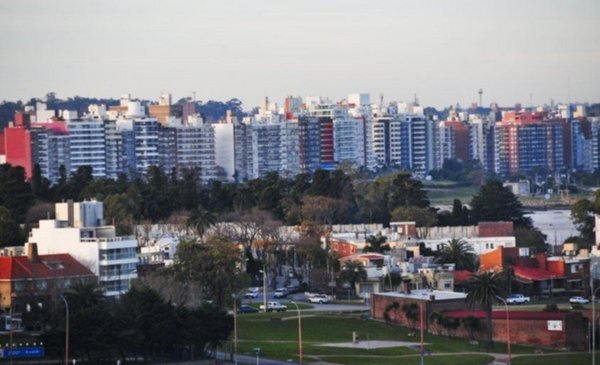The business of buying and selling real estate recorded operations for at least $890 million in the first six months of the year. This amount is an approximation calculated by The Observer taking as reference the collection of the Property Transfer Tax (ITP) managed by the General Tax Directorate (DGI). The tax is levied at a rate of 2% on the buyer and another 2% on the seller of usufruct real estate.
Between January and June, the ITP collected $1,460 million, with a nominal interannual variation of 29.6%. At the current exchange rate, that amount of pesos is equivalent to about US$ 35.6 million. Taking into account that the tax represents 4% of the value of real estate operations, it can be projected that the businesses totaled US$ 890 million as a floor. The figure is higher than that registered in the first half of 2021, which totaled about US$ 650 million)
The figure is only an approximation to the amounts negotiated in the real estate area –which are higher–, because the basis for calculating the tax is the cadastral value, which is usually less than the prices of the effective sales agreements.
The ITP also does not cover Promoted Housing units (VP - formerly Social Interest Housing), which are exempted on first sale, and which are sold at a good pace in the new units segment, with demand mainly from Uruguayan and Argentine investors. to allocate to the rental market.
The latest data published by the National Housing Agency showed that between January and April there were 686 affidavits for the sale of promoted housing, 15% above the same period in 2021.
The president of the Real Estate Chamber of Uruguay, Beatriz Carámbula, stated days ago to the weekly Crónicas that the sector is going through a “very good and dynamic” year for the sale of apartments, houses and fields. The pandemic caused a change in people’s perspective and a “boom” has emerged with “private neighborhoods” preferably in the city of Canelones, because “a clear, quiet place that connects with nature” is preferred, he said. of example.
For his part, the director of the Moebius real estate consultancy, Gonzalo Martínez Vargas, highlighted that the greater dynamism in sales observed after the pandemic has been maintained. “A lot of stuff was sold. Especially in promoted housing, which is studio apartment and one-bedroom units, everything is being sold. Today it is difficult to find, for example, a one-bedroom apartment to occupy now. There are almost none for sale. In studio apartments more or less the same thing happens, ”she told The Observer.
“There is also a lot of premium work. And fields and small plots of 300 and 400 meters have been sold to develop constructions, especially in Maldonado. (…) In general it is selling well and it will continue, for a reason there are a lot of works. Most builders have two or three pieces of land already with projects up to launch shortly,” he added.
Another outstanding aspect is the arrival of new players on the market. These are Chilean investors who are buying properties in Uruguay, and even some Peruvians to a lesser extent.
“The Chilean who was used to tranquility and stability today does not have it. The closest thing there is is Uruguay, which apart from being the only country in the region that is calm everywhere. And the United States no longer has the advantages it used to, and with inflation and taxes it no longer looks as attractive. The distance also affects”, said Martínez Vargas.
what happened to the prices
Regarding the sale prices, it was peculiar that the most demanded neighborhoods had price decreases but less than 1%. The ranking of values per square meter remained similar to previous reports: the most expensive properties are in Carrasco with a value per square meter of US$3,457, followed by Punta Carretas with US$3,336 and Carrasco Norte with US$3,070 per square meter. The neighborhoods with the lowest values per square meter, on the other hand, are: Maroñas, Colón and Nuevo París, in all three cases with values less than US$750.
and insideIn general, the average values per square meter decrease as the departments move away from the coast and the coastline of the country. In any case, in most departmental capitals, prices per square meter are around or exceed US$1,000. And some cities of Colonia, Minas and Rocha have values even close to or higher than US$1,500.







